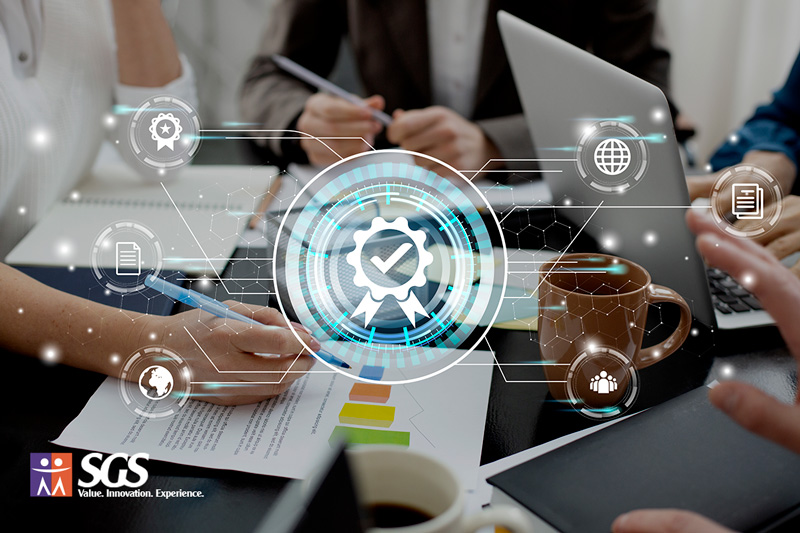Product Lifecycle Management (PLM) has emerged as a vital tool for organizations aiming to optimize their product development cycle. SGS Technologie, a pioneering name in the tech industry, has demonstrated exemplary practices in integrating PLM to achieve effective product development. This blog explores the best PLM practices adopted by SGS Technologie and our impact on product development.
1. Cross-functional Collaboration and Communication
Effective product development hinges on seamless communication and collaboration among different departments. SGS Technologie recognizes the importance of breaking down silos and promoting cross-functional teamwork. By implementing PLM, we've created a centralized platform where teams can access real-time project updates, share insights, and collaborate effortlessly. This ensures that everyone is on the same page, minimizing misunderstandings and accelerating decision-making.
2. Early-Stage Conceptualization
SGS Technologie understands that a strong foundation is key to successful product development. Hence, we emphasize robust early-stage conceptualization. PLM facilitates this by enabling teams to ideate, create, and evaluate product concepts within the system. This practice ensures that potential issues are identified and addressed early, reducing costly revisions during later stages of development.
3. Requirements Management
Precise requirements management is a cornerstone of effective product development. SGS Technologie employs PLM to document, organize, and track project requirements comprehensively. This ensures that all stakeholders have a clear understanding of the project scope, preventing scope creep and ensuring that the end product aligns with customer expectations.
4. Iterative Design and Prototyping
SGS Technologie's commitment to continuous improvement is reflected in our iterative design and prototyping process. PLM allows us to create and manage multiple design iterations and prototypes, facilitating efficient testing and validation. This practice accelerates the product development cycle while enhancing product quality.
5. Risk Management and Mitigation
Innovation often comes with inherent risks. SGS Technologie leverages PLM to identify potential risks early in the development process. Maintaining a risk register and implementing mitigation strategies ensures that potential roadblocks are addressed proactively, minimizing disruptions and delays.
6. Supplier Collaboration
Smooth collaboration with suppliers is crucial for timely and cost-effective product development. SGS Technologie leverages PLM to establish a secure platform where suppliers can contribute their expertise, provide feedback, and stay informed about project updates. This practice fosters a symbiotic relationship, leading to better supplier integration and higher-quality components.
7. Change Management
Adaptability is a hallmark of successful product development. SGS Technologie recognizes the need for efficient change management processes. PLM enables us to document and track changes, assess the impact, and implement seamlessly across the development cycle. This practice ensures that modifications are executed smoothly, minimizing disruptions, and maintaining project momentum.
8. Quality Assurance and Testing
SGS Technologie places a strong emphasis on product quality and reliability. PLM plays a pivotal role in our quality assurance and testing processes. It allows us to create and manage test plans, track defects, and document testing outcomes comprehensively. By integrating quality control within the PLM framework, we ensure that the end product meets the highest standards.
9. Documentation and Knowledge Management
Effective documentation is essential for knowledge retention and future reference. SGS Technologie utilizes PLM to create a centralized repository for project documentation, including design specifications, test results, and user manuals. This practice ensures that valuable insights are preserved and can be accessed by relevant teams, even after the product has been launched.
10. Post-launch Analysis and Improvement
The product development process doesn't end with the launch. SGS Technologie employs PLM to collect and analyze post-launch data, including user feedback and performance metrics. This information is used to identify areas for improvement, plan updates, and drive product enhancements in subsequent iterations.
SGS Technologie's adoption of best PLM practices has significantly elevated our product development process. From fostering cross-functional collaboration to enhancing quality assurance and post-launch improvements, PLM has become an integral part of our success story. SGS Technologie's holistic approach, facilitated by PLM, demonstrates that effective product development isn't just about the end product; it's about a journey of continuous improvement and innovation.

<script type="application/ld+json">
{
"@context": "http://schema.org",
"@type": "Article",
"name": "PLM Best Practices for Effective Product Development",
"author": {
"@type": "Person",
"name": "Majestic"
},
"image": "https://www.sgstechnologies.net/sites/default/files/2023-08/Standard-quality-control-collage-.jpg",
"articleSection": "Product Lifecycle Management (PLM) has emerged as a vital tool for organizations aiming to optimize their product development cycle. SGS Technologie, a pioneering name in the tech industry, has demonstrated exemplary practices in integrating PLM to achieve effective product development. This blog explores the",
"articleBody": "best PLM practices adopted by SGS Technologie and our impact on product development.</P>\n\n<P><STRONG>1. Cross-functional Collaboration and Communication</STRONG><BR/>\nEffective product development hinges on seamless communication and collaboration among different departments. SGS Technologie recognizes the importance of breaking down silos and promoting cross-functional teamwork. By implementing PLM, we've created a centralized platform where teams can access real-time project updates, share insights, and collaborate effortlessly. This ensures that everyone is on the same page, minimizing misunderstandings and accelerating decision-making.</P>\n\n<P><STRONG>2. Early-Stage Conceptualization</STRONG><BR/>\nSGS Technologie understands that a strong foundation is key to successful product development. Hence, we emphasize robust early-stage conceptualization. PLM facilitates this by enabling teams to ideate, create, and evaluate product concepts within the system. This practice ensures that potential issues are identified and addressed early, reducing costly revisions during later stages of development.</P>\n\n<P><STRONG>3. Requirements Management</STRONG><BR/>\nPrecise requirements management is a cornerstone of effective product development. SGS Technologie employs PLM to document, organize, and track project requirements comprehensively. This ensures that all stakeholders have a clear understanding of the project scope, preventing scope creep and ensuring that the end product aligns with customer expectations.</P>\n\n<P><STRONG>4. Iterative Design and Prototyping</STRONG><BR/>\nSGS Technologie's commitment to continuous improvement is reflected in our iterative design and prototyping process. PLM allows us to create and manage multiple design iterations and prototypes, facilitating efficient testing and validation. This practice accelerates the product development cycle while enhancing product quality.</P>\n\n<P><STRONG>5. Risk Management and Mitigation</STRONG><BR/>\nInnovation often comes with inherent risks. SGS Technologie leverages PLM to identify potential risks early in the development process. Maintaining a risk register and implementing mitigation strategies ensures that potential roadblocks are addressed proactively, minimizing disruptions and delays.</P>\n\n<P><STRONG>6. Supplier Collaboration</STRONG><BR/>\nSmooth collaboration with suppliers is crucial for timely and cost-effective product development. SGS Technologie leverages PLM to establish a secure platform where suppliers can contribute their expertise, provide feedback, and stay informed about project updates. This practice fosters a symbiotic relationship, leading to better supplier integration and higher-quality components.</P>\n\n<P><STRONG>7. Change Management</STRONG><BR/>\nAdaptability is a hallmark of successful product development. SGS Technologie recognizes the need for efficient change management processes. PLM enables us to document and track changes, assess the impact, and implement seamlessly across the development cycle. This practice ensures that modifications are executed smoothly, minimizing disruptions, and maintaining project momentum.</P>\n\n<P><STRONG>8. Quality Assurance and Testing</STRONG><BR/>\nSGS Technologie places a strong emphasis on product quality and reliability. PLM plays a pivotal role in our quality assurance and testing processes. It allows us to create and manage test plans, track defects, and document testing outcomes comprehensively. By integrating quality control within the PLM framework, we ensure that the end product meets the highest standards.</P>\n\n<P><STRONG>9. Documentation and Knowledge Management</STRONG><BR/>\nEffective documentation is essential for knowledge retention and future reference. SGS Technologie utilizes PLM to create a centralized repository for project documentation, including design specifications, test results, and user manuals. This practice ensures that valuable insights are preserved and can be accessed by relevant teams, even after the product has been launched.</P>\n\n<P><STRONG>10. Post-launch Analysis and Improvement</STRONG><BR/>\nThe product development process doesn't end with the launch. SGS Technologie employs PLM to collect and analyze post-launch data, including user feedback and performance metrics. This information is used to identify areas for improvement, plan updates, and drive product enhancements in subsequent iterations.</P>\n\n<P><A href=\"https://www.sgstechnologies.net/contact\">SGS Technologie's</A> adoption of best PLM practices has significantly elevated our product development process. From fostering cross-functional collaboration to enhancing quality assurance and post-launch improvements, PLM has become an integral part of our success story. SGS Technologie's holistic approach, facilitated by PLM, demonstrates that effective product development isn't just about the end product; it's about a journey of continuous improvement and innovation",
"url": "https://www.sgstechnologies.net/blog/PLM-Best-Practices-for-Effective-Product-Development",
"publisher": {
"@type": "Organization",
"name": "SGS"
}
}
</script>










